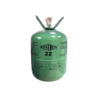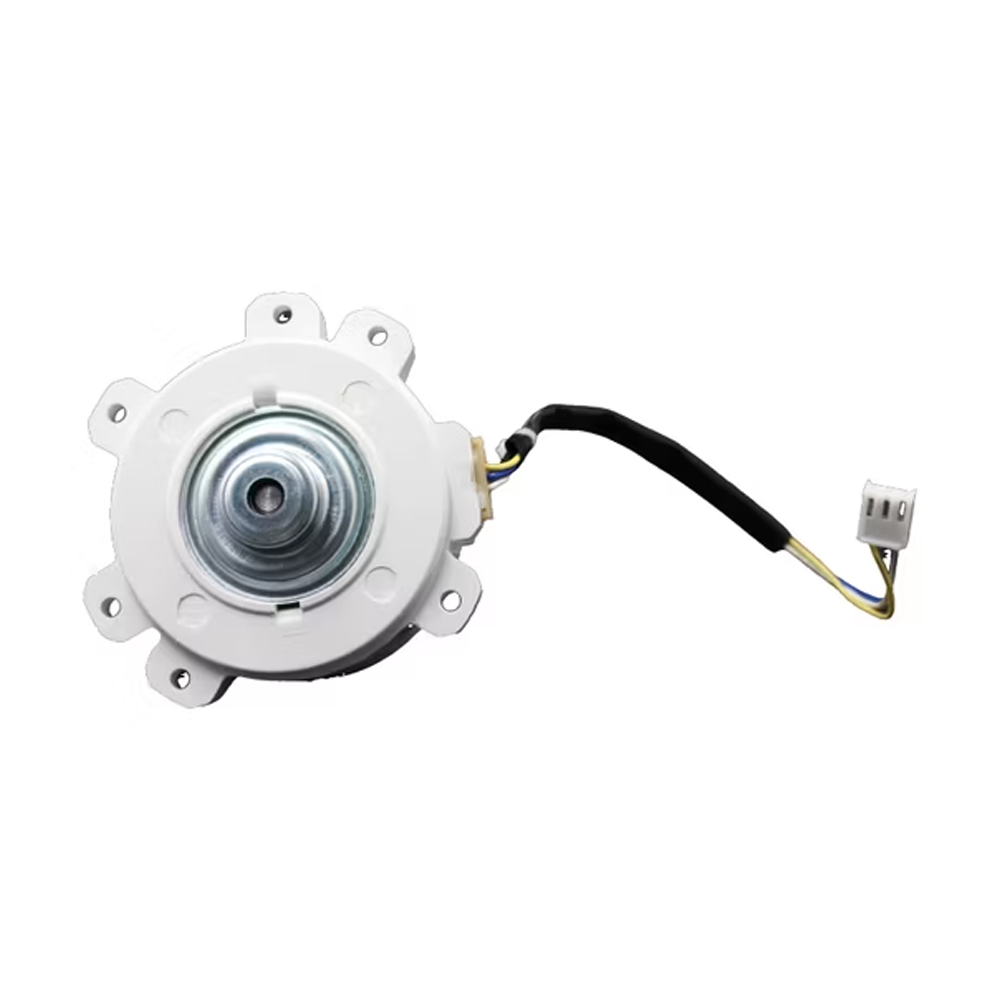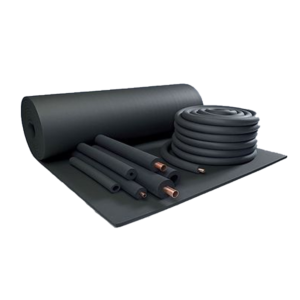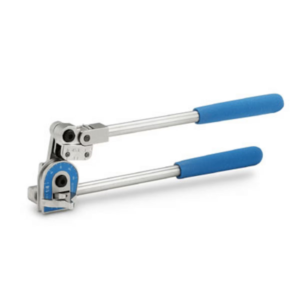🚚 Fast Delivery | ⭐ Best Quality | 📞 24/7 Support
+971 2 552 3918
info@coolwaybm.com
- Power Tools & Machinery
- Fire and Safety Equipement
Fire and Safety Equipement
- Adhesives
- Plumbing & Sanitary
- Packing Materials
Packing Materials
- Abrasives
- Carpentry
- Welding Accessories
Welding Accessories
- Fasteners
- Lock & Furniture Accessories
Lock & Furniture Accessories
- A/C Refrigeration
- Electrical
Electrical
You can add any HTML here
We suggest you to create a Saved Template in Dashboard -> Templates -> Saved Templates and use it by switching content type above to Saved template.
Overview of Fan Motors and Their Key Applications
Fan motors are crucial components in a variety of applications, from household appliances to large HVAC systems. They convert electrical energy into mechanical energy, driving the fan blades to produce airflow. Each type of fan motor has unique characteristics that make it suitable for specific uses, such as durability, efficiency, and adaptability to varying conditions. Below is a detailed look at the different types of fan motors, including AC, DC, Brushless DC, Shaded Pole, Universal, EC, and Capacitor Start motors.
1. AC Fan Motors
Alternating Current (AC) fan motors are among the most commonly used motors, especially in residential and commercial HVAC systems. They operate on standard AC power and offer stable performance, making them reliable and durable. AC fan motors provide consistent speed and powerful airflow, which is essential in air conditioners, refrigerators, and ventilation systems. While they lack variable speed control, their robustness and simplicity make them ideal for continuous, stable performance in many cooling and heating applications.
2. DC Fan Motors
Direct Current (DC) fan motors are gaining popularity for their energy efficiency and variable speed capabilities. These motors use DC power, which allows for better speed control and reduced energy consumption compared to traditional AC motors. DC fan motors are lightweight, quiet, and versatile, making them suitable for modern applications such as electric fans, battery-operated devices, and some automotive uses. Their energy-saving properties also contribute to reducing operational costs, which is why they are often chosen for eco-friendly applications.
3. Brushless DC (BLDC) Motors
Brushless DC motors, or BLDC motors, are highly efficient and long-lasting due to the absence of brushes, which reduces wear and friction. BLDC motors offer excellent speed control and reliability, making them ideal for high-performance applications such as computer cooling fans, electric vehicles, and advanced HVAC systems. They are quiet and require minimal maintenance, making them a popular choice for continuous operation in both commercial and industrial settings. Although more expensive than brushed motors, their durability and performance justify the investment in many applications.
4. Shaded Pole Motors
Shaded pole motors are simple, low-cost motors often found in small appliances and ventilation equipment. Their straightforward design and low power requirements make them ideal for applications where a modest airflow is needed, such as refrigerator fans and exhaust fans. While they lack efficiency and power compared to other motor types, shaded pole motors remain popular in low-torque applications due to their affordability and ease of use. Their slow-speed operation also reduces noise, which can be beneficial in quiet environments.
5. Universal Motors
Universal motors are versatile, high-speed motors that can operate on both AC and DC power. They are frequently used in household appliances like vacuum cleaners, blenders, and portable fans. Known for their high speed and compact design, universal motors deliver powerful airflow in small packages. However, they tend to be noisier and have a shorter lifespan than other motor types, making them less suitable for continuous operation. Despite these limitations, their adaptability and power make them ideal for high-speed applications in appliances.
6. EC (Electronically Commutated) Motors
Electronically Commutated (EC) motors combine the advantages of AC and DC motors, using electronic controls to achieve high efficiency and variable speed. EC motors are widely used in HVAC and ventilation systems, where efficiency, quiet operation, and precise control are crucial. These motors are energy-efficient and meet stringent environmental regulations, making them an eco-friendly choice for ventilation and climate control systems. Although EC motors come with a higher initial cost, their efficiency and operational savings make them a long-term solution for energy-conscious applications.
7. Capacitor Start Motors
Capacitor Start motors are designed to provide high starting torque, making them suitable for larger fans and blowers that require an extra push to start up. These motors use a capacitor to boost starting power, making them ideal for applications that involve moving large volumes of air. Capacitor Start motors are commonly found in industrial and heavy-duty fans, as well as some household appliances. Their ability to handle high-torque applications makes them a reliable choice for demanding environments where performance is key.
Factors to Consider When Choosing a Fan Motor
When selecting a fan motor, several factors need to be considered to ensure optimal performance and longevity. These include:
- Power Requirements: AC motors are ideal for stable power sources, while DC and EC motors are preferred for variable speed and energy efficiency.
- Application Needs: Different motors are suited for specific tasks, such as high-speed applications (universal motors) or low-cost options for small fans (shaded pole motors).
- Energy Efficiency: For applications requiring energy savings, DC, EC, and BLDC motors are excellent choices.
- Noise Level: Motors like shaded pole and BLDC are quieter, making them ideal for environments where noise reduction is essential.
- Initial Cost vs. Longevity: While BLDC and EC motors have a higher upfront cost, their durability and low maintenance can provide better value over time.
Environmental Impact and Efficiency
With an increasing focus on sustainability, energy-efficient motors like DC, EC, and BLDC are in demand. These motors help reduce electricity consumption, contributing to lower greenhouse gas emissions. Furthermore, advanced control systems in EC motors allow precise speed adjustments, optimizing energy use based on the specific needs of the application.
In contrast, traditional motors like shaded pole and universal motors, while cost-effective, have higher energy consumption and shorter lifespans, making them less suitable for eco-friendly operations. Upgrading to more efficient motor types can significantly reduce environmental impact, especially in applications with continuous or high energy demand.
Conclusion
Fan motors play an essential role in various applications, from cooling to ventilation. Each motor type—whether AC, DC, BLDC, shaded pole, universal, EC, or capacitor start—has specific advantages that make it suitable for certain applications. Selecting the right fan motor involves balancing efficiency, power needs, noise levels, and cost. With the rise of energy-efficient technologies, options like EC and BLDC motors are becoming the preferred choice for sustainable and high-performance applications.
There is £4.99 charge for delivery under £50 Orders. Additional charges will be imposed by our couriers for delivery to remote area, a surcharge may be levied to cover carriage to these areas.
FAN MOTERS
د.إ1.00
Short Description
- AC Fan Motors: Efficient and durable; commonly used in residential and commercial HVAC systems; offers stable speed and strong airflow.
- DC Fan Motors: Energy-saving and versatile; used in modern applications with variable speed control; lightweight and quiet.
- Brushless DC (BLDC) Motors: Long-lasting and highly efficient; low maintenance due to no brush friction; ideal for high-performance applications.
- Shaded Pole Motors: Low-cost and simple design; typically used in small fans, refrigerators, and exhaust systems.
- Universal Motors: High-speed and versatile; works with both AC and DC power; often used in household appliances.
- EC (Electronically Commutated) Motors: Combines AC and DC technologies; highly efficient, quiet, and suitable for HVAC and ventilation systems.
- Capacitor Start Motors: Powerful starting torque; used in larger fans and blowers where initial force is crucial.
Overview of Fan Motors and Their Key Applications
Fan motors are crucial components in a variety of applications, from household appliances to large HVAC systems. They convert electrical energy into mechanical energy, driving the fan blades to produce airflow. Each type of fan motor has unique characteristics that make it suitable for specific uses, such as durability, efficiency, and adaptability to varying conditions. Below is a detailed look at the different types of fan motors, including AC, DC, Brushless DC, Shaded Pole, Universal, EC, and Capacitor Start motors.
1. AC Fan Motors
Alternating Current (AC) fan motors are among the most commonly used motors, especially in residential and commercial HVAC systems. They operate on standard AC power and offer stable performance, making them reliable and durable. AC fan motors provide consistent speed and powerful airflow, which is essential in air conditioners, refrigerators, and ventilation systems. While they lack variable speed control, their robustness and simplicity make them ideal for continuous, stable performance in many cooling and heating applications.
2. DC Fan Motors
Direct Current (DC) fan motors are gaining popularity for their energy efficiency and variable speed capabilities. These motors use DC power, which allows for better speed control and reduced energy consumption compared to traditional AC motors. DC fan motors are lightweight, quiet, and versatile, making them suitable for modern applications such as electric fans, battery-operated devices, and some automotive uses. Their energy-saving properties also contribute to reducing operational costs, which is why they are often chosen for eco-friendly applications.
3. Brushless DC (BLDC) Motors
Brushless DC motors, or BLDC motors, are highly efficient and long-lasting due to the absence of brushes, which reduces wear and friction. BLDC motors offer excellent speed control and reliability, making them ideal for high-performance applications such as computer cooling fans, electric vehicles, and advanced HVAC systems. They are quiet and require minimal maintenance, making them a popular choice for continuous operation in both commercial and industrial settings. Although more expensive than brushed motors, their durability and performance justify the investment in many applications.
4. Shaded Pole Motors
Shaded pole motors are simple, low-cost motors often found in small appliances and ventilation equipment. Their straightforward design and low power requirements make them ideal for applications where a modest airflow is needed, such as refrigerator fans and exhaust fans. While they lack efficiency and power compared to other motor types, shaded pole motors remain popular in low-torque applications due to their affordability and ease of use. Their slow-speed operation also reduces noise, which can be beneficial in quiet environments.
5. Universal Motors
Universal motors are versatile, high-speed motors that can operate on both AC and DC power. They are frequently used in household appliances like vacuum cleaners, blenders, and portable fans. Known for their high speed and compact design, universal motors deliver powerful airflow in small packages. However, they tend to be noisier and have a shorter lifespan than other motor types, making them less suitable for continuous operation. Despite these limitations, their adaptability and power make them ideal for high-speed applications in appliances.
6. EC (Electronically Commutated) Motors
Electronically Commutated (EC) motors combine the advantages of AC and DC motors, using electronic controls to achieve high efficiency and variable speed. EC motors are widely used in HVAC and ventilation systems, where efficiency, quiet operation, and precise control are crucial. These motors are energy-efficient and meet stringent environmental regulations, making them an eco-friendly choice for ventilation and climate control systems. Although EC motors come with a higher initial cost, their efficiency and operational savings make them a long-term solution for energy-conscious applications.
7. Capacitor Start Motors
Capacitor Start motors are designed to provide high starting torque, making them suitable for larger fans and blowers that require an extra push to start up. These motors use a capacitor to boost starting power, making them ideal for applications that involve moving large volumes of air. Capacitor Start motors are commonly found in industrial and heavy-duty fans, as well as some household appliances. Their ability to handle high-torque applications makes them a reliable choice for demanding environments where performance is key.
Factors to Consider When Choosing a Fan Motor
When selecting a fan motor, several factors need to be considered to ensure optimal performance and longevity. These include:
- Power Requirements: AC motors are ideal for stable power sources, while DC and EC motors are preferred for variable speed and energy efficiency.
- Application Needs: Different motors are suited for specific tasks, such as high-speed applications (universal motors) or low-cost options for small fans (shaded pole motors).
- Energy Efficiency: For applications requiring energy savings, DC, EC, and BLDC motors are excellent choices.
- Noise Level: Motors like shaded pole and BLDC are quieter, making them ideal for environments where noise reduction is essential.
- Initial Cost vs. Longevity: While BLDC and EC motors have a higher upfront cost, their durability and low maintenance can provide better value over time.
Environmental Impact and Efficiency
With an increasing focus on sustainability, energy-efficient motors like DC, EC, and BLDC are in demand. These motors help reduce electricity consumption, contributing to lower greenhouse gas emissions. Furthermore, advanced control systems in EC motors allow precise speed adjustments, optimizing energy use based on the specific needs of the application.
In contrast, traditional motors like shaded pole and universal motors, while cost-effective, have higher energy consumption and shorter lifespans, making them less suitable for eco-friendly operations. Upgrading to more efficient motor types can significantly reduce environmental impact, especially in applications with continuous or high energy demand.
Conclusion
Fan motors play an essential role in various applications, from cooling to ventilation. Each motor type—whether AC, DC, BLDC, shaded pole, universal, EC, or capacitor start—has specific advantages that make it suitable for certain applications. Selecting the right fan motor involves balancing efficiency, power needs, noise levels, and cost. With the rise of energy-efficient technologies, options like EC and BLDC motors are becoming the preferred choice for sustainable and high-performance applications.
There is £4.99 charge for delivery under £50 Orders. Additional charges will be imposed by our couriers for delivery to remote area, a surcharge may be levied to cover carriage to these areas.
Reviews
There are no reviews yet.
Buy more save more!
Buy from 2 to 4 items and get 10% OFF
on each productBuy from 5 to 8 items and get 15% OFF
on each product- Free shipping on all orders above 50,00
- No hassle returns, 30 days return
- Next day delivery within your country












Reviews
There are no reviews yet.